england
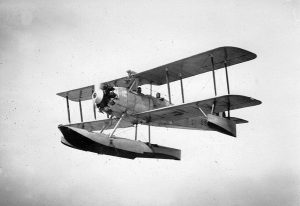 On January 17, 1920, the law prohibiting the use or sale of alcohol in the United States went into effect. Before long, illegal bars, called speakeasies were trying to pass off dangerous locally made industrial alcohol as the real thing, but customers were quickly rejecting the foul-tasting brew. The people were demanding quality, authentic Scotch and other liquor “right off the boat.” Within weeks, organized smuggling of imported whiskey, rum, and other liquor, called Rumrunning began. Among the customers for imported booze from Europe, Canada and the Caribbean were the nation’s bootleggers who ran and supplied thousands of speakeasies. Tops among them were Big Bill Dwyer (dubbed “King of the Bootleggers” by the press) and Mob bosses Charles “Lucky” Luciano in New York and Al Capone in Chicago.
On January 17, 1920, the law prohibiting the use or sale of alcohol in the United States went into effect. Before long, illegal bars, called speakeasies were trying to pass off dangerous locally made industrial alcohol as the real thing, but customers were quickly rejecting the foul-tasting brew. The people were demanding quality, authentic Scotch and other liquor “right off the boat.” Within weeks, organized smuggling of imported whiskey, rum, and other liquor, called Rumrunning began. Among the customers for imported booze from Europe, Canada and the Caribbean were the nation’s bootleggers who ran and supplied thousands of speakeasies. Tops among them were Big Bill Dwyer (dubbed “King of the Bootleggers” by the press) and Mob bosses Charles “Lucky” Luciano in New York and Al Capone in Chicago.
Liquor was smuggled in from any country where it was still legal, and the Rumrunners would then have to find new and unique ways to get it to their buyers. Shipments of whiskey from Great Britain traveled to Nassau in the Bahamas and elsewhere in the Caribbean, before being smuggled to America’s East Coast and New Orleans. Whiskey distilled in Canada was smuggled by ship or across land to the West Coast from British Columbia, to the Midwest from Saskatchewan and Ontario, and to the East from Nova Scotia and the French island of Saint Pierre, a liquor smuggler’s hotspot off Newfoundland. Loads of rum from the Caribbean, imported champagne, and other alcohol also made it ashore. Captains of boats loaded with liquor bottles in false bottoms beneath fish bins anchored offshore at designated areas waiting for “contact boats,” small high-speed crafts with buyers who tossed aboard a bundle of large bills bound by elastic bands, 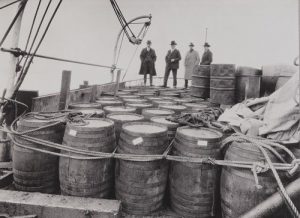 loaded their liquor orders onto their boats and sped to shore to load it onto trucks headed for New York, Boston and other cities. One such stretch of ocean for liquor-selling boats, famously called “Rum Row,” ran from New York to Atlantic City, 12 miles out in international waters to avoid the U.S. Coast Guard.
loaded their liquor orders onto their boats and sped to shore to load it onto trucks headed for New York, Boston and other cities. One such stretch of ocean for liquor-selling boats, famously called “Rum Row,” ran from New York to Atlantic City, 12 miles out in international waters to avoid the U.S. Coast Guard.
The “golden years” of rumrunning were the early 1920s…before Bureau of Prohibition agents, local police and the Coast Guard knew just what liquor smugglers were up to. On the Detroit River, Detroit’s vicious Purple Gang used speed boats to run liquor into town from Windsor, Ontario. They also hijacked the loads their competitors. One infamous Western rumrunner was Roy Olmstead, who shipped Canadian whiskey from a distillery in Victoria in southwestern Canada down the Haro Strait, stashing it on D’Arcy Island on its way to Seattle. Olmstead was making $200,000 a month before Prohibition agents tapped his phone, leading to his arrest and end as a rumrunner in 1924. Individual bootleggers transporting booze by land to Seattle would hide it in automobiles under false floorboards with felt padding or in fake gas tanks. Sometimes whiskey was mixed with the air in the tubes of tires. To fool authorities at the border, a smuggler might have a woman and child inside his car with hidden liquor or even stow it inside a school bus transporting children. Out at sea or on the Great Lakes, rumrunners in schooners or motor boats contended with the Coast Guard, rough weather and frozen water. Even worse were the “go-through guys,” hoodlums armed with pistols and machines guns in speed boats who hijacked the ships, stole cargo, cash, and at times killed rumrunners’ crews and sank their ships.
The fast-moving rumrunners frustrated the Coast Guard so much by 1923 that Commandant William E. 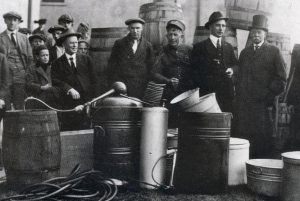 Reynolds asked the federal government for 200 more cruisers and 90 speed boats for patrols to catch up with the contact boats. The agency also added 36 World War I naval ships to enforce Prohibition and employ 11,000 officers and crew. On June 20, 1923, a large fleet of Seaplanes were to be mobilized in an attempt to catch rum smugglers off the Atlantic Coast, it was believed these would be more successful than current means of catching the rum runners who are equipped with very fast boats that are outrunning federal agents. The reality is that they never really stopped the smuggling of liquor into the United States, and in the end, prohibition proved to be a miserable failure. On December 5th, 1933, when the 21st Amendment was ratified, Prohibition was abolished in the United States.
Reynolds asked the federal government for 200 more cruisers and 90 speed boats for patrols to catch up with the contact boats. The agency also added 36 World War I naval ships to enforce Prohibition and employ 11,000 officers and crew. On June 20, 1923, a large fleet of Seaplanes were to be mobilized in an attempt to catch rum smugglers off the Atlantic Coast, it was believed these would be more successful than current means of catching the rum runners who are equipped with very fast boats that are outrunning federal agents. The reality is that they never really stopped the smuggling of liquor into the United States, and in the end, prohibition proved to be a miserable failure. On December 5th, 1933, when the 21st Amendment was ratified, Prohibition was abolished in the United States.
 Whenever I come across a book about World War II, and especially about a B-17 Bomber, I want to read it. That subject holds my interest mostly because my dad, Allen Spencer was a top turret gunner and flight engineer on a B-17 bomber stationed at Great Ashfield, Suffolk, England. Lately, I have been “reading” by way of Audible.com, and I must say that having a book read to you, allows you to sit back and enjoy it as if you were watching it unfold before your very eyes. So, when I came across a book called The Lost Airman written by Seth Meyerowitz, I knew I had to hear about it. As the true story began, I found that Arthur Meyerowitz (Seth Meyerowitz’ grandfather) could have been my own dad…at least to the extent that both of them were in the Eight Air Force stationed in England. Arthur was assigned to a B-24 Liberator. At first their experiences were probably almost identical. Arriving at his base, Arthur heard the men who had been there a while, tease the newcomers with things like “You’ll be sorry you came here” or “Look, fresh meat.” I can only imagine how that kind of thing must have felt to the new and often very young airmen…like a swift kick in the gut!! Then the book went on to tell how the airmen felt on their first mission, when no one could eat breakfast, because of the churning in their stomach. Arthur was the flight engineer and top turret gunner, just like my dad had been. It was the job of the flight engineer to check the plane over to ensure that it was fight worthy, and report to the captain. Arthur found problems with their plane, Harmful Lil Armful, and told his captain it needed repairs, but his captain wouldn’t hear of it. He was close to going home, and wanted his last mission out of the way, and besides what did this “newbie” know. He was only on his second mission, and he was filling in for someone else. So, they took off…a catastrophic decision.
Whenever I come across a book about World War II, and especially about a B-17 Bomber, I want to read it. That subject holds my interest mostly because my dad, Allen Spencer was a top turret gunner and flight engineer on a B-17 bomber stationed at Great Ashfield, Suffolk, England. Lately, I have been “reading” by way of Audible.com, and I must say that having a book read to you, allows you to sit back and enjoy it as if you were watching it unfold before your very eyes. So, when I came across a book called The Lost Airman written by Seth Meyerowitz, I knew I had to hear about it. As the true story began, I found that Arthur Meyerowitz (Seth Meyerowitz’ grandfather) could have been my own dad…at least to the extent that both of them were in the Eight Air Force stationed in England. Arthur was assigned to a B-24 Liberator. At first their experiences were probably almost identical. Arriving at his base, Arthur heard the men who had been there a while, tease the newcomers with things like “You’ll be sorry you came here” or “Look, fresh meat.” I can only imagine how that kind of thing must have felt to the new and often very young airmen…like a swift kick in the gut!! Then the book went on to tell how the airmen felt on their first mission, when no one could eat breakfast, because of the churning in their stomach. Arthur was the flight engineer and top turret gunner, just like my dad had been. It was the job of the flight engineer to check the plane over to ensure that it was fight worthy, and report to the captain. Arthur found problems with their plane, Harmful Lil Armful, and told his captain it needed repairs, but his captain wouldn’t hear of it. He was close to going home, and wanted his last mission out of the way, and besides what did this “newbie” know. He was only on his second mission, and he was filling in for someone else. So, they took off…a catastrophic decision.
This was where and similarities between Arthur’s experiences, and those of my dad ended, because my dad was not shot down like Arthur’s plane was. At the point Arthur’s plane was going down, his pilot and co-pilot showed incredible cowardice, and abandoned the plane first…something that was just not done. Arthur tried to 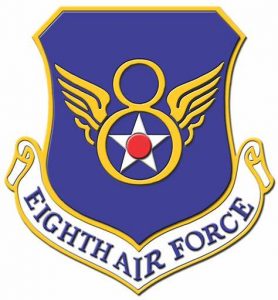 make sure everyone was off, but in the end, one man was stuck and injured. He told Arthur to go and take the newcomer with him, but the newcomer wouldn’t go. He fought Arthur, and actually kicked him off the plane, physically. As Arthur fell, he was sickened by the fact that his pilot and co-pilot jumped first, and that his friends would not be coming home. The pilot and co-pilot spent the rest of the war in a prison camp, but the outcome for Arthur was different, and in fact, miraculous, in more ways than one, because Arthur was not only an airman in the US Army Air Forces, but he was also a Jewish man facing the Nazis in World War II…a perilous place to be.
make sure everyone was off, but in the end, one man was stuck and injured. He told Arthur to go and take the newcomer with him, but the newcomer wouldn’t go. He fought Arthur, and actually kicked him off the plane, physically. As Arthur fell, he was sickened by the fact that his pilot and co-pilot jumped first, and that his friends would not be coming home. The pilot and co-pilot spent the rest of the war in a prison camp, but the outcome for Arthur was different, and in fact, miraculous, in more ways than one, because Arthur was not only an airman in the US Army Air Forces, but he was also a Jewish man facing the Nazis in World War II…a perilous place to be.
It was at this point in the book that my interest in it changed, because this could have been the fate of my dad, had his plane been shot down, but it hadn’t. While the outcome for Arthur was better than that of his crew mates, he still went through a harrowing experience, as did those who helped him. Arthur came down in occupied France on December 31, 1943, and in his landing, he badly hurt his back. From that point on, Arthur came in contact with some of the most amazing people on earth in that or any other time. The French resistance network took Arthur in, and over the next six months, they slowly smuggled him and a British Airman out through Spain to the Rock of Gibraltar. These people did this with precision and secrecy. They knew that if they were caught, they would be killed, but they hated the Nazis, and would do anything to fight against the Nazi regime…right up to, and for some, including giving their lives. The chances they took and the hardships they faced…voluntarily, were so far above and beyond the call of duty, that it almost seemed like a fictional movie. You know, the kind where the good guys always win, and the bad guys always lose. Nevertheless, this wasn’t a fictional movie, and the lives lost were real, but Arthur  Meyerowitz was not among the lives lost. His was saved because of the selfless acts of so many people in the French Resistance. The story of Arthur Meyerowitz was, for me, so moving that in the end, I cried, and throughout the book, there were moments that I could hardly breathe with the tension of the situations they found themselves in. I felt bad to think it, but I was so thankful that my dad’s B-17 always made it home, and he never had to face the prison camps, or try to escape from a hostile nation. For Arthur, his escape was miraculous, and I believe it was because of the fervent prayers of his family and the undying faith of his mother, who believed that God would bring her son home…and God did.
Meyerowitz was not among the lives lost. His was saved because of the selfless acts of so many people in the French Resistance. The story of Arthur Meyerowitz was, for me, so moving that in the end, I cried, and throughout the book, there were moments that I could hardly breathe with the tension of the situations they found themselves in. I felt bad to think it, but I was so thankful that my dad’s B-17 always made it home, and he never had to face the prison camps, or try to escape from a hostile nation. For Arthur, his escape was miraculous, and I believe it was because of the fervent prayers of his family and the undying faith of his mother, who believed that God would bring her son home…and God did.
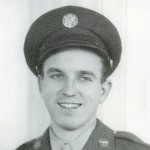
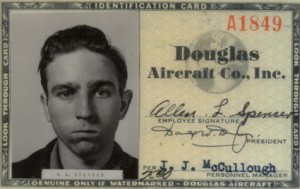 A while back, my sister, Cheryl Masterson and I were talking about our Dad, Allen Spencer’s military training. Like much of Dad’s military service, big discussions about his training days were non-existent. So, I decided to trace his military career, to the best ability I could, and basically take a walk in his footsteps. We knew that he shipped out of Fort Snelling, Minnesota, and then spent time in Salt Lake City, Utah and in Kearney, Nebraska. We weren’t sure exactly where his basic training took place or his training for the B-17. That conversation got my curiosity going, and I decided that I needed to check it out. It’s not always easy to research a persons path through every aspect of their lives, but with the knowledge that he initially started out at Fort Snelling, I hoped to trace the rest of his journey through World War II. Fort Snelling, it turns out was a Reception Center. The men and women started there, received their vaccinations, medical exams, and their gear. They were classified and assigned to a unit. Then they were shipped out for their basic training.
A while back, my sister, Cheryl Masterson and I were talking about our Dad, Allen Spencer’s military training. Like much of Dad’s military service, big discussions about his training days were non-existent. So, I decided to trace his military career, to the best ability I could, and basically take a walk in his footsteps. We knew that he shipped out of Fort Snelling, Minnesota, and then spent time in Salt Lake City, Utah and in Kearney, Nebraska. We weren’t sure exactly where his basic training took place or his training for the B-17. That conversation got my curiosity going, and I decided that I needed to check it out. It’s not always easy to research a persons path through every aspect of their lives, but with the knowledge that he initially started out at Fort Snelling, I hoped to trace the rest of his journey through World War II. Fort Snelling, it turns out was a Reception Center. The men and women started there, received their vaccinations, medical exams, and their gear. They were classified and assigned to a unit. Then they were shipped out for their basic training.
Most of the men in dad’s original unit would go on to become part of the transport or supply teams, but because my dad had a job building airplanes for Douglas Aircraft Company prior to enlisting in the Army Air Force, he was moved to a unit that would spend the war in a B-17G flying Fortress Bomber. For my dad, it was an epic job. He often wrote home to his family about just how amazing the B-17 Bomber was, and how proud 
 he was to be serving on one. Part of dad’s job was to be the flight engineer, another position that stemmed from his vast knowledge of airplanes. The flight engineer knew the all equipment on the B-17 better than the pilot and any other crew member from the engines to the radio equipment to the armament to the engines to the electrical system and to anything else. Many flight engineers served as maintenance crew chiefs before moving to the position of a B-17 flight engineer. The flight engineer was also the top turret gunner. Dad’s training for his work took him to Miami Beach, Florida, then to Gulfport, Mississippi, and Dyersburg, Tennessee.
he was to be serving on one. Part of dad’s job was to be the flight engineer, another position that stemmed from his vast knowledge of airplanes. The flight engineer knew the all equipment on the B-17 better than the pilot and any other crew member from the engines to the radio equipment to the armament to the engines to the electrical system and to anything else. Many flight engineers served as maintenance crew chiefs before moving to the position of a B-17 flight engineer. The flight engineer was also the top turret gunner. Dad’s training for his work took him to Miami Beach, Florida, then to Gulfport, Mississippi, and Dyersburg, Tennessee.
In Gulfport, Mississippi, dad was trained as a flight airplane mechanic, and it was here that he volunteered to become an aerial gunner as well. He received his wings in November 1943, following gunnery training in Las Vegas, Nevada. Dyersburg Army Air Force Base was the largest combat aircrew training school built during the early war years. It was the only inland B-17 Flying Fortress training base east of the Mississippi River. The base was located on 2,541 acres, not including the practice range. Approximately 7,700 crew men received their last phase training at DAAB. From Dyersburg AAB, dad was sent to Kearney, Nebraska. There he and his crew were assigned a brand new B-17G bomber. Shortly thereafter they flew to New York to be dispatched to their base in the European Theater…Great Ashfield, Suffolk, England. Before arriving there, he wasn’t even sure where he was going, because these things were kept top secret, and were revealed on a need-to-know basis. Based out of Great Ashfield, dad flew 36 missions, one more that the required 35, having volunteered to fill in for a sick 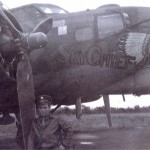
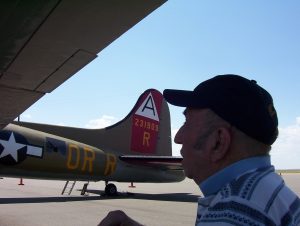 crewmember on the final flight. In one of his letters, he told his family not to worry about him, because as he said, “I’m not afraid of what the near future might bring. I’m going into combat fully confident of my plane, crew, and myself. And I know that with the help of God, I’ll come home again in just as good a condition as I am right now.” And so he did. Today would have been my dad’s 95th birthday. Happy birthday in Heaven Dad. We love and miss you very much and we are so proud of you.
crewmember on the final flight. In one of his letters, he told his family not to worry about him, because as he said, “I’m not afraid of what the near future might bring. I’m going into combat fully confident of my plane, crew, and myself. And I know that with the help of God, I’ll come home again in just as good a condition as I am right now.” And so he did. Today would have been my dad’s 95th birthday. Happy birthday in Heaven Dad. We love and miss you very much and we are so proud of you.
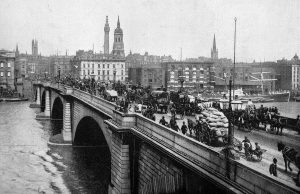
 They say that money can buy you just about anything…if you have enough of it. I suppose that in the area of material things, that might be true. Nevertheless, sometimes I wonder about the purchases made when people have money. Some purchases might be an interesting novelty, and might even have a purpose in the end, but they just seem like a rather extravagant, and yes, eccentric purchase. Nevertheless, for a price, some of the strangest purchases have been made.
They say that money can buy you just about anything…if you have enough of it. I suppose that in the area of material things, that might be true. Nevertheless, sometimes I wonder about the purchases made when people have money. Some purchases might be an interesting novelty, and might even have a purpose in the end, but they just seem like a rather extravagant, and yes, eccentric purchase. Nevertheless, for a price, some of the strangest purchases have been made.
I don’t know if Robert P. McCulloch was an eccentric millionaire, or if he just liked what he liked, but on April 18, 1968, he made a deal to buy the London Bridge, for 1 million dollars. He then had it disassembled from it’s former location spanning the River Thames in London, England, and reassembled in Lake Havasu City, Arizona. As the bridge was disassembled, each piece was numbered to aid in the re-assembly project. Then it was transported to Arizona to be re-assembled over the Colorado River, connecting an island there to the main part of Lake Havasu City. The bridge was originally built in the 1830s. The move was quite the undertaking.
Apparently, McCulloch was searching for a unique attraction for his city. His search eventually took him to London. By the early 1960s it was apparent that John Rennie’s 1831 “New” London Bridge was gradually sinking into the River Thames and the City of London Corporation decided that a new bridge was needed. Still, the bridge was a historic landmark, so rather than demolish the existing bridge, they decided to auction the historic landmark. I guess McCulloch wasn’t the only one with strange ideas. The Arizona bridge is a reinforced concrete structure that is covered in the original masonry of the 1830s bridge. To accomplish an exact duplicate, McCulloch had the exterior granite blocks from the original bridge numbered and transported to America to construct the present bridge in Lake Havasu City, to adorn a planned community he established in 1964 on the shore of Lake Havasu. The bridge was completed in 1971, complete with a canal, and it links an island in the Colorado River with the main part of Lake Havasu City.
Probably the most amazing thing about this is that Lake Havasu City can actually claim that they have the 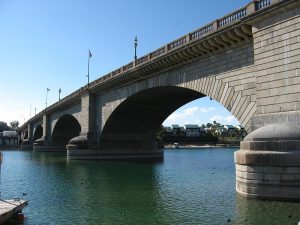
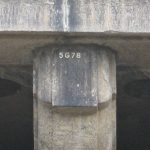 London Bridge there. Many people have made jokes about the intelligence of buyers, saying that if you’ll buy that, they have some ocean front property or even a bridge to sell you in Arizona. Well, I wouldn’t go for the ocean front property, which as we all know, doesn’t exist in Arizona, but the bridge is somewhat believable, although I doubt if this bridge is for sale, and if it was, I don’t know many people who could afford it. Nevertheless, it is a very unique landmark, and a very strange purchase, indeed.
London Bridge there. Many people have made jokes about the intelligence of buyers, saying that if you’ll buy that, they have some ocean front property or even a bridge to sell you in Arizona. Well, I wouldn’t go for the ocean front property, which as we all know, doesn’t exist in Arizona, but the bridge is somewhat believable, although I doubt if this bridge is for sale, and if it was, I don’t know many people who could afford it. Nevertheless, it is a very unique landmark, and a very strange purchase, indeed.
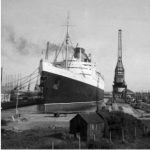 One of the most elegant ships ever built, RMS Queen Elizabeth, was one of the two superliners built by John Brown and Company in Clydebank, Scotland, in the 1930s. The ship did not start out as RMS Queen Elizabeth, but rather as Hull 552. Later, it was named in honor of Queen Elizabeth, and launched, on 27 September 1938. The RMS Queen Elizabeth was 1,031 feet long and 118.5 feet wide. It was the largest passenger liner ever constructed…until then anyway.
One of the most elegant ships ever built, RMS Queen Elizabeth, was one of the two superliners built by John Brown and Company in Clydebank, Scotland, in the 1930s. The ship did not start out as RMS Queen Elizabeth, but rather as Hull 552. Later, it was named in honor of Queen Elizabeth, and launched, on 27 September 1938. The RMS Queen Elizabeth was 1,031 feet long and 118.5 feet wide. It was the largest passenger liner ever constructed…until then anyway.
During the late 1930s, workers at a Scottish construction site began building a sea vessel for the Cunard Line ocean liner company that would be larger and more luxurious than anything the world had ever seen. However, the outbreak of World War II in 1939 prevented the completion of the Queen Elizabeth‘s finer points. The vessel was hastily made seaworthy for wartime service and was used as a transport vessel for the Allies, carrying massive amounts of supplies and several hundred thousand troops around the world until the war’s end. Because of the concerns over German bombing, the ship was moved to New York to harbor it in a safer place.
After the war, the ship, which was equipped with a 200,000 horsepower engine, was embellished with an elegant art deco style. It made its public debut in 1946, leaving Southampton, England, on its first luxurious 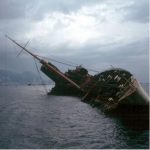 run across the Atlantic. The ship continued to be a luxury passenger liner until it retirement in 1968.
run across the Atlantic. The ship continued to be a luxury passenger liner until it retirement in 1968.
Then, the Queen Elizabeth was auctioned off to the highest bidder, eventually being purchased in 1970 by C.W. Tung, a Taiwanese shipping tycoon. Tung renamed the vessel Seawise University and began work on converting the ship into a learning center that would tour the world. However, in early 1972, as the mobile university neared completion, a fire destroyed the pride of the Cunard Line. The fire broke out while the ship was docked in Hong Kong Harbor, and by the next morning the famous vessel was a total loss on the bottom of the sea floor.
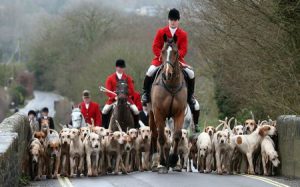 There is a tradition in England and a few other nations like Canada and Ireland, that takes place the day after Christmas, called Boxing Day. It is an odd name for a holiday, but I think the purpose of the holiday far outweighs the name of the holiday. People might argue the original purpose of the holiday, but the most straightforward answer as to what it is about would be that, “We are a little greedy here in the England and Ireland in wanting a more extended holiday. It is not enough for us to have only Christmas Day celebrations, we have added to this another event called Boxing Day.” That might be one part of the picture, but the full answer is not that simple. But firstly, it has nothing to do with the sport of boxing.
There is a tradition in England and a few other nations like Canada and Ireland, that takes place the day after Christmas, called Boxing Day. It is an odd name for a holiday, but I think the purpose of the holiday far outweighs the name of the holiday. People might argue the original purpose of the holiday, but the most straightforward answer as to what it is about would be that, “We are a little greedy here in the England and Ireland in wanting a more extended holiday. It is not enough for us to have only Christmas Day celebrations, we have added to this another event called Boxing Day.” That might be one part of the picture, but the full answer is not that simple. But firstly, it has nothing to do with the sport of boxing.
Boxing Day is a national Bank Holiday. It is a day to spend with family and friends and to eat up all the leftovers of Christmas Day, but there is more to it than that. The origins of the day are filled with history and tradition. People have long disputed the origins of the name Boxing Day. The name is actually a reference to holiday gifts. A “Christmas Box” in Britain is a name for a Christmas present. Boxing Day was traditionally a day off for the servants and the day when they received a “Christmas Box” from the master. The servants would also go home on Boxing Day to give “Christmas Boxes” to their families.
Traditionally, a box to collect money for the poor was placed in churches on Christmas day. The boxes were  opened the next day…Boxing Day. The name refers to a nautical tradition. Great sailing ships when setting sail would have a sealed box containing money on board for good luck. Were the voyage a success, the box was given to a priest, opened at Christmas and the contents then given to the poor. Boxing Day is the 26th December is a national holiday in England and Ireland.
opened the next day…Boxing Day. The name refers to a nautical tradition. Great sailing ships when setting sail would have a sealed box containing money on board for good luck. Were the voyage a success, the box was given to a priest, opened at Christmas and the contents then given to the poor. Boxing Day is the 26th December is a national holiday in England and Ireland.
Boxing Day is a time to spend with family or friends, but usually not those seen on Christmas Day itself. In recent times, the day has begun to include many sports. Horse racing is particularly popular with meets all over the country. Many top football teams also play on Boxing Day. Boxing Day is a time when the British show their eccentric side by taking part in all kinds of silly activities. Bizarre traditions include swimming the icy cold English Channel, fun runs, and charity events. Until 2004, Boxing Day hunts were a traditional part of the day, but the ban on fox hunting has put an end to this in its usual sense. Hunters will still gather dressed resplendently in red hunting coats to the sound of the hunting horn. But, since it is now forbidden to chase the fox with dogs, they now follow artificially laid trails.
Another “sport” to emerge in recent years is shopping. Sadly, what was once a day of relaxation and family time sees the start of the sales. Sales used to start in January, post-New Year, but the desire to grab a bargain and for shops to off-load stock means many now begin on Boxing Day. This tradition makes me especially sad, because it is like Black Friday. By moving Black Friday shopping to Thanksgiving, and now post Christmas sales to Boxing Day, have soured many people to shopping on these days, and the whole purpose is defeated.

In Ireland, Boxing Day is also known as “Saint Stephen’s Day” named after the Saint stoned to death for believing in Jesus. In Ireland on Boxing, there was once a barbaric act carried out by the so-called “Wren Boys.” These boys would dress up and go out, and stone wren birds to death then carry their catch around the town knocking on doors and asking for money, the stoning representing what had happened to Saint Stephen. This terrible tradition has now stopped, thank goodness, but the Wrens Boys still dress up. Now, instead they parade around town and collect money for charity. I’m thankful that such a barbaric tradition, has now taken on a new look, and is now used for good.
 When the colonists left England to form America, they were like the younger sibling, at least when it came to language and much of how they ran the country. Nevertheless, like that younger sibling, things began to change pretty quickly. Part of the change was due simply to distance. When you don’t hear a language all the time, you begin to vary in your own speech. I didn’t really realize there was such a difference between American English and British English, other than the accent of course. Still, I noticed that more and more forms were asking which of the two I spoke. I always thought that it was an odd question, because English is English…right? Well, the correct answer is…wrong!! And when I thought about it, I knew that to be true.
When the colonists left England to form America, they were like the younger sibling, at least when it came to language and much of how they ran the country. Nevertheless, like that younger sibling, things began to change pretty quickly. Part of the change was due simply to distance. When you don’t hear a language all the time, you begin to vary in your own speech. I didn’t really realize there was such a difference between American English and British English, other than the accent of course. Still, I noticed that more and more forms were asking which of the two I spoke. I always thought that it was an odd question, because English is English…right? Well, the correct answer is…wrong!! And when I thought about it, I knew that to be true.
The changes began almost immediately after the first Englishman set foot on American soil. It all started with “Americanisms.” These “Americanisms” have been created or changed from other English terms to produce a language that differs from our forefathers, signifying our uniqueness and independence. I’m sure our founders were rather pleased with themselves with this process, if they realized it at all. By the time of the first United States census, in 1790, there were four million Americans, 90% of whom were descendants of English colonists. When I think of the speed of that growth, it strikes me as phenomenal to say the least. Because of the large English background, there was no question that our official native language would be “English,” but it would not be the same as that spoken in Great Britain. “Americanism” means a word or expression that originated in the United States. The term includes outright coinages and foreign borrowings which first became “English” in the United States, as well as older terms used in new senses first given them in American usage.
In fact, by 1720, the colonists knew that we did not speak the same language as the people in England. The most obvious reason was, of course, the sheer distance from England. Nevertheless, that was not the only  reason. Over the years, many words were borrowed from the Native Americans, as well as other immigrants from France, Germany, Spain, and other countries. We had to communicate with the people around us too, and other words that became obsolete “across the pond,” continued to be utilized in the colonies. In other cases, words simply had to be created in order to explain the unfamiliar landscape, weather, animals, plants, and living conditions that these early pioneers encountered. These things might not have existed in England.
reason. Over the years, many words were borrowed from the Native Americans, as well as other immigrants from France, Germany, Spain, and other countries. We had to communicate with the people around us too, and other words that became obsolete “across the pond,” continued to be utilized in the colonies. In other cases, words simply had to be created in order to explain the unfamiliar landscape, weather, animals, plants, and living conditions that these early pioneers encountered. These things might not have existed in England.
By 1756, the English would make the first “official” reference to the “American dialect.” Samuel Johnson made note of it a year after he published his Dictionary of the English Language. Johnson’s use of the term “American dialect” was not meant to simply explain the differences, but rather, was intended as an insult. It was rather like calling our language the “low class” version of the English language. Remember if you will, that there were those who did not think the United States should ever be a sovereign nation. Years earlier…as early as 1735, the English were calling our language “barbarous,” and referred to our “Americanisms” as barbarisms. The English sneered at our language, something that continued for more than a century after the Revolutionary War, as they laughed and condemned as unnecessary, hundreds of American terms and phrases.
Our newly independent Americans, were proud of their “new” American language, wearing it, as a badge of independence. In 1789, Noah Webster wrote in his Dissertations on the English Language: “The reasons for American English being different than English English are simple: As an independent nation, our honor requires us to have a system of our own, in language as well as government.” Our leaders, including Thomas Jefferson and Benjamin Rush, agreed. It was not only good politics, it was sensible. The feelings of the “rest of the world” didn’t matter. The language changed even more during the western movement as Native American and 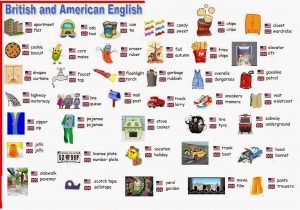 Spanish words became a part of our language.
Spanish words became a part of our language.
In 1923, the State of Illinois General Assembly, passed the act stating in part: “The official language of the State of Illinois shall be known hereafter as the “American” language and not as the “English” language.” A similar bill was also introduced in the U.S. House of Representatives the same year but died in committee. Now, after centuries of forming our “own” language, the English and American versions are once again beginning to blend as movies, songs, electronics, and global traveling bring the two “languages” closer together once again.

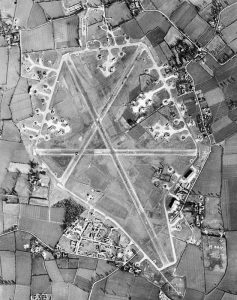 Most of the time, when we think of time and distance here on planet earth, we tend to feel like we are just a speck compared to the size of this planet, and I suppose that is true, but sometimes, our connection to one another is, in reality, much closer than we know. My dad, Allen L “Al” Spencer was a top turret gunner on a B-17G Bomber in World War II. He was stationed at Great Ashfield, Suffolk, England. I have always been very proud of my dad’s service, and because of his service, I have also always had an interest in other World War II bases in England.
Most of the time, when we think of time and distance here on planet earth, we tend to feel like we are just a speck compared to the size of this planet, and I suppose that is true, but sometimes, our connection to one another is, in reality, much closer than we know. My dad, Allen L “Al” Spencer was a top turret gunner on a B-17G Bomber in World War II. He was stationed at Great Ashfield, Suffolk, England. I have always been very proud of my dad’s service, and because of his service, I have also always had an interest in other World War II bases in England.
Yesterday, while researching my husband Bob’s great uncle, Richard F “Frank” Knox for his birthday today, I found myself reading his obituary again, looking for more information on a man I admired. I have always liked Frank very much, but because of the fact that we lived in Wyoming and they lived in Washington, I can’t say that I knew about his everyday life, and I certainly didn’t know about his military career. That said, while I had read the obituary right after his passing July 13, 2017, somehow it didn’t  hit me that he was stationed as a communications officer at RAF Horham, Suffolk, England. Of course, my curious mind had to go to Google Earth. I wanted to know if the Air Base was still visible, because most of them have been in one way or another returned to farm land. I did find the base, and while it’s outline isn’t as clearly marked as Great Ashfield is, I could pick out RAF Horham too. After finding the base, I was able to imagine a young Uncle Frank living and working there during the war. To me, that thought was very interesting, but another thing I noticed was the fact that Horham was not that far from Great Ashfield. In fact, my dad and Bob’s Uncle Frank were stationed a mere 22 miles away from each other. It is doubtful that they ever met, and if they did, they probably wouldn’t remember it, because it would be just in passing, but it occurs to me now, that the two men have probably met in Heaven, and they probably had some interesting stories to tell about their time in England.
hit me that he was stationed as a communications officer at RAF Horham, Suffolk, England. Of course, my curious mind had to go to Google Earth. I wanted to know if the Air Base was still visible, because most of them have been in one way or another returned to farm land. I did find the base, and while it’s outline isn’t as clearly marked as Great Ashfield is, I could pick out RAF Horham too. After finding the base, I was able to imagine a young Uncle Frank living and working there during the war. To me, that thought was very interesting, but another thing I noticed was the fact that Horham was not that far from Great Ashfield. In fact, my dad and Bob’s Uncle Frank were stationed a mere 22 miles away from each other. It is doubtful that they ever met, and if they did, they probably wouldn’t remember it, because it would be just in passing, but it occurs to me now, that the two men have probably met in Heaven, and they probably had some interesting stories to tell about their time in England.
As big as this old world is, and as unlikely as it seems that two families could have some close connections like this, I find that at least in my life, and my husband’s life, there are some connections, some very near misses, and some interesting encounters. Like my dad, Uncle Frank served out his time in the Army Air Forces right there 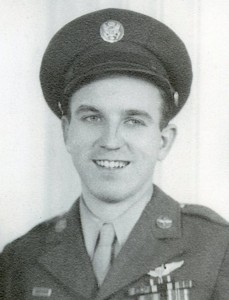
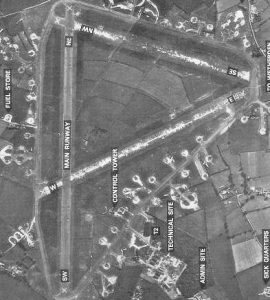 at RAF Horham, Suffolk, England. I imagine that like my dad, Frank took at least one leave to go and see London, because how could you go to England and not see London. Frank had a successful career in communications and then after his discharge from the service, four years, four months and four days of active duty, separating at war’s end with the rank of major. Frank served with distinction, earning a Bronze Star and the Air Medal, then he continued his military career in the Air Force Reserve. He retired in 1968 with the rank of Lieutenant Colonel. Today would have been Uncle Frank’s 98th birthday, and it is his first in Heaven. Happy birthday in Heaven, Uncle Frank. We love and miss you very much.
at RAF Horham, Suffolk, England. I imagine that like my dad, Frank took at least one leave to go and see London, because how could you go to England and not see London. Frank had a successful career in communications and then after his discharge from the service, four years, four months and four days of active duty, separating at war’s end with the rank of major. Frank served with distinction, earning a Bronze Star and the Air Medal, then he continued his military career in the Air Force Reserve. He retired in 1968 with the rank of Lieutenant Colonel. Today would have been Uncle Frank’s 98th birthday, and it is his first in Heaven. Happy birthday in Heaven, Uncle Frank. We love and miss you very much.
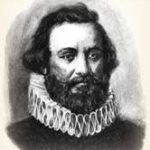 When the colonists came over to the new world, they really didn’t know how they were going to make a living. They were most likely planning to raise their own crops, along with hunting and fishing, but the reality is that those things were only going to take them so far. They were going to need other things. In 1620, Plymouth Colony was founded in present-day Massachusetts. The settlers there had planned to make a living with cod fishing, but that wasn’t going very well. So, within a few years of their first fur export, the Plymouth colonists began concentrating entirely on the fur trade. They developed an economic system in which their chief crop, Indian corn, was traded with Native Americans to the north for highly valued beaver skins, which were then sold in England to pay the Plymouth Colony’s debts and buy necessary supplies.
When the colonists came over to the new world, they really didn’t know how they were going to make a living. They were most likely planning to raise their own crops, along with hunting and fishing, but the reality is that those things were only going to take them so far. They were going to need other things. In 1620, Plymouth Colony was founded in present-day Massachusetts. The settlers there had planned to make a living with cod fishing, but that wasn’t going very well. So, within a few years of their first fur export, the Plymouth colonists began concentrating entirely on the fur trade. They developed an economic system in which their chief crop, Indian corn, was traded with Native Americans to the north for highly valued beaver skins, which were then sold in England to pay the Plymouth Colony’s debts and buy necessary supplies.
In November 9, 1621, Robert Cushman a deacon and captain of the Fortune arrived with 35 new settlers for Plymouth Colony…the first new colonists since the settlement was founded over a year earlier. The plan was to drop off the settlers, and then a month later, head back to England with a cargo of furs to pay for supplies and to pay debts the colony owed to England. On December 13, 1621, Robert Cushman and the Fortune set sail back to England, but theirs was not to be a good voyage. During Cushman’s return to England, the Fortune was  captured by the French, and its valuable cargo of furs was taken. Cushman was detained on the Ile d’Dieu before being returned to England. The capture was due to a navigation error. About January 19, 1622, Fortune was overtaken and seized by a French warship, with those on board being held under guard in France for about a month and with its cargo taken. Fortune finally arrived back in the Thames on February 17, 1622.
captured by the French, and its valuable cargo of furs was taken. Cushman was detained on the Ile d’Dieu before being returned to England. The capture was due to a navigation error. About January 19, 1622, Fortune was overtaken and seized by a French warship, with those on board being held under guard in France for about a month and with its cargo taken. Fortune finally arrived back in the Thames on February 17, 1622.
The Fortune was 1/3 the size of the Mayflower, displacing 55 tons. The arrival of the vessel sent by the English investors, who had funded the Mayflower colonists, should have been a cause for celebration. But for the Pilgrims, Fortune was poorly named. The ship brought 35 new settlers, but none of the expected supplies. With new mouths to feed, rations were reduced by half. Worse, the investors demanded that the ship return immediately to England, stocked with trade goods. The Pilgrims complied by loading Fortune with “good clapboard as full as she could stow” and two hogsheads of beaver and otter skins, only to have them lost to the French, which the English investors did not seem to care about.
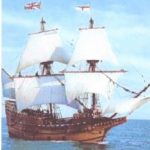 After the Mayflower brought the Plymouth settlers, they struggled under the demands of their English investors for seven years. The investors also sent a letter criticizing the settlers because the Mayflower arrived back in England with an empty hold, and demanding that the Fortune return immediately filled with valuable goods. The colonists complied. For the next six years, they sent sizable shipments, especially of furs, back to England. But the goods yielded far less profit than the investors expected, and as the seven year mark approached, the colonists were still in debt. Finally, 27 of them pooled their personal resources and paid off the debt. Once free of the requirement to live communally and hold all property in common, the original settlers divided the land into private lots, and the era of the “Old Comers” was over.
After the Mayflower brought the Plymouth settlers, they struggled under the demands of their English investors for seven years. The investors also sent a letter criticizing the settlers because the Mayflower arrived back in England with an empty hold, and demanding that the Fortune return immediately filled with valuable goods. The colonists complied. For the next six years, they sent sizable shipments, especially of furs, back to England. But the goods yielded far less profit than the investors expected, and as the seven year mark approached, the colonists were still in debt. Finally, 27 of them pooled their personal resources and paid off the debt. Once free of the requirement to live communally and hold all property in common, the original settlers divided the land into private lots, and the era of the “Old Comers” was over.
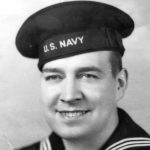 When we think of the name Hitler, most of us think of the vicious dictator who was responsible for the slaughter of as many a 6 million Jewish people, not to mention all the other people he killed in his crazed state of mind. For most of us, hearing the name Hitler brings with it feelings of horror, disgust, and continued shock every time we learn a new fact about Hitler and his Third Reich. Yes, the name Hitler doesn’t usually bring any feelings of…anything good. Well, what I learned today, changed my view of that. You see, not everyone named Hitler was evil, not even everyone named Hitler during World War II, and not even everyone who had the unfortunate…misfortune of being related to Adolf Hitler. You see, for William Patrick Hitler of Liverpool, England, having the name wasn’t the worst part of his situation. William was actually the nephew of Adolf Hitler, the Führer of Nazi Germany. It was a reality that made him almost nauseous. Dealing with that reality would take William on a zigzag path leading to Germany, England, America, and finally the United States Navy. I’m sure that you, like me, thought, “How could the United States Navy allow a nephew of Adolf Hitler to join up, much less to muster out with men sent to fight his uncle.
When we think of the name Hitler, most of us think of the vicious dictator who was responsible for the slaughter of as many a 6 million Jewish people, not to mention all the other people he killed in his crazed state of mind. For most of us, hearing the name Hitler brings with it feelings of horror, disgust, and continued shock every time we learn a new fact about Hitler and his Third Reich. Yes, the name Hitler doesn’t usually bring any feelings of…anything good. Well, what I learned today, changed my view of that. You see, not everyone named Hitler was evil, not even everyone named Hitler during World War II, and not even everyone who had the unfortunate…misfortune of being related to Adolf Hitler. You see, for William Patrick Hitler of Liverpool, England, having the name wasn’t the worst part of his situation. William was actually the nephew of Adolf Hitler, the Führer of Nazi Germany. It was a reality that made him almost nauseous. Dealing with that reality would take William on a zigzag path leading to Germany, England, America, and finally the United States Navy. I’m sure that you, like me, thought, “How could the United States Navy allow a nephew of Adolf Hitler to join up, much less to muster out with men sent to fight his uncle.
Born March 12, 1911, in Liverpool, England, William Hitler was the only child of Bridget Dowling and her Austrian expatriate husband, Alois Hitler Jr, who was the half-brother of Adolf Hitler. In 1914, Alois abandoned his wife and three year old son to go traveling through Europe. The outbreak of World War I prevented him from returning to England, so he settled down in Germany, married again, despite still being married to Dowling, and started a new family. For years, Alois made no attempt to contact his wife and son back in Liverpool, but rather had someone tell Dowling that he was dead. In 1924, the truth came out. Alois was charged with bigamy in Germany, but avoided conviction because Dowling actually interceded on his behalf. That was all she did however. She drew the line, when Alois asked her to send William to Germany for a visit. She told him that she would not let her son visit until he reached his 18th birthday, in 1929. Upon turning 18, William traveled to Germany and reconnected with his father, who took him to a Nazi rally where he saw his Uncle Adolf, leader of the rising National Socialist (Nazi) Party. William visited Germany again in 1930, this time 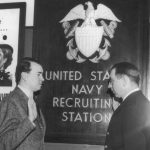 meeting his uncle in person and receiving an autographed photo from him.
meeting his uncle in person and receiving an autographed photo from him.
I’m sure that William thought that his relationship with his uncle would be something that would advance his journalism career, but Hitler didn’t want anyone to know what he was doing. William’s articles about his Uncle Adolf Hitler, only served to be the beginning of being blackballed from everything to do with Adolf Hitler, and his disgust with Adolf Hitler and his insane ways. Hitler called William to Berlin, and reportedly ordered him to retract the articles. Now William saw a totally different side of his uncle…describing it as a “wild-eyed and tearful” outburst. Apparently Hitler even threatened to kill himself if William ever again published anything about his personal life. Now, William became persona non grata in England. He was fired from his job in 1932. Unable to find other employment in his homeland, he decided to look for work in Germany. Perhaps his increasingly influential uncle could be persuaded to help, but no warm welcome awaited in Germany. According to William, whose July 4, 1939 article for Look magazine, “Why I Hate My Uncle,” is the sole source on his dealings with his uncle Adolf Hitler, who sent William a letter during his visit, denying they were relatives. Shortly afterward, William’s father sent him back to England. I guess he was persona non grata with his dad too.
William tried using his relationship to Hitler to obtain a job in Germany, and was successful, but when he tried to send money to his mother, he was informed that Hitler would not allow it…even for family. William began to see a much more evil side of his uncle. Eventually, he left Germany and went back to England, but found that he was not welcome there either. He and his mother moved to the United States, where his relationship again caused him problems. Finally, in 1942, William wrote directly to President Franklin D. Roosevelt, begging to be allowed to serve in the US military. “I am one of many, but can render service to this great cause,” he wrote. FDR passed the letter on to FBI Director J. Edgar Hoover, who looked into William’s background and finally cleared him for military service. Sworn into the US Navy in New York City on March 6, 1944, William Hitler went on to serve three years as a pharmacist’s mate, receiving the Purple Heart for a wound he suffered. He was 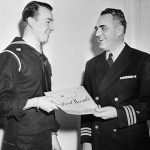 discharged in 1947.
discharged in 1947.
Finally tired of the attention his controversial surname attracted, William changed it to Stuart-Houston after returning to the civilian world. He married German-born Phyllis Jean-Jacques, and the couple settled in Patchogue on New York’s Long Island, where they had four children, the first of whom bore the surprising middle name of Adolf. William ran a blood analysis lab, Brookhaven Laboratories, in his family’s home. William Stuart-Houston died on July 14, 1987, and was buried next to his late mother in Coram, New York. His children did not produce any children of their own…and so ended the line.

